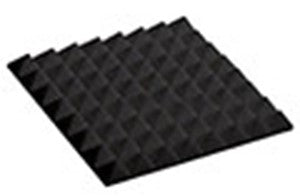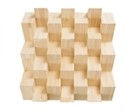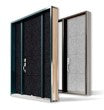HOW TO SOUNDPROOF A ROOM FOR MUSIC RECORDING

The most basic purpose of soundproofing a room for music recording is to prepare against any external echoes, noise and reverberations. The process goes vice versa where the sound recorded internally is not allowed to escape the room. It is not possible in the ideal cases to block hundred percent sound waves from either entering or escaping the premises. But, yes, increasing the amount of material within the boundaries of the room ensures that it cannot be vibrated easily due to internal and external reverberations. Soundproofing and various sound absorption techniques significantly reduce the amount of noise generated feasibly.
Getting the studio accustomed to high-quality recording

It becomes quite essential to add mass to the premises when packing it securely for audio recording. Building thicker walls, applying wall padding, filling air gaps, isolation pads, etc, there are innumerable techniques to prepare the room for audio recording activities like music production, podcasts, etc. Remember, it is as simple as getting the most expensive and efficient gears for recording but still not being able to achieve your music production goals quie brilliantly because of the hindrance caused due to the disturbances in the environment not considered conducive for the sound produced.

To get the most out of your equipment and produce only professional-quality audio, you’ll need to keep outside sounds from being heard and recorded. We will now be discussing ways to soundproof the room for best quality audio recording and some practical methodologies to apply them!
1)Increasing the amount of material with the room’s premises
Adding increased mass to the room’s premises lets you pad and cushion within the boundaries. Making your walls thicker and more dense ensures that echoes or reverberations of any type do not shake-up the room. The vision to soundproof and enhance sound absorption is to get maximum results out of your recording gears. Thicker walls ensure the sound is not reflected back and absorbed with the thickness. Thus refraining it from entering or exiting the premises.
Installing absorbent panels or foam mats work for both high and low frequency sound absorption pretty efficiently. Designed for a controlled response to the sound, acoustically deadened environment is what you would not end up with surely.
2)Dampening the surrounding noise and vibrations
How will you completely eliminate the sound waves traveling through the wooden frame around the room, along the drywalls and up your mic stands? There are certain disturbances along the bass region that cannot either be absorbed or completely dissipated. Slowing down these vibrations, the technique of applying a little pressure to the wave disturbances dampen them or eventually nullify the amplitude altogether.
3)Fill in the air gaps
A room within a room, the effect drastically reduces and blocks out the external noise. There might be air gaps left alongside the doors and windows, wooden windows, pipes, air-conditioning vents, and door frames, through which significant amounts of noise can seep in and out. This sort of leakage undermines the soundproofing technique you stick to for an improved sound quality strengthening the grassroots of a music recording studio. Seal the air gaps and let your music studio have an added insulation for an extra vibration absorbency.
4)Application of decoupling structures
A simple isolation technique to cover the wall surfaces, these equipment protect your room’s boundaries and keep intact the magical music recording experience. An external vibrations will have to be barred an easy entry into the room that could otherwise shake it through unnecessarily createc noise and buzz. Decoupling structures are the most feasible solution when you don’t have the choice to go for adding insulation or a soundproofing material to the walls. It’s also good for getting clearer instrumental sounds for separate microphones in isolated booths. A great start to inherit the decoupling structure trend!
Don’t damage but soundproof for a scintillating recording experience

Musical sessions and recordings at home, an innate for most of the artists! It is they who love to play with their art and recreate it every time they are to experiment and execute a uniquely defining experience with the artform. Musical sessions are not subjected to surroundings, it is more about the mood and the feel that is the real kick start! However, those who indulge in professional studio recording need hands-on soundproofing. Not marring the space and still getting the maximum out of the sessions conducted, soundproofing your room without damaging the walls is a valuable skill no matter where you practice!









































